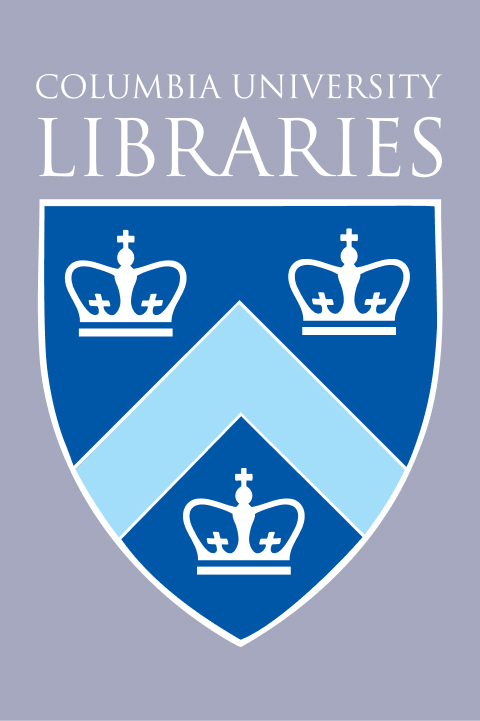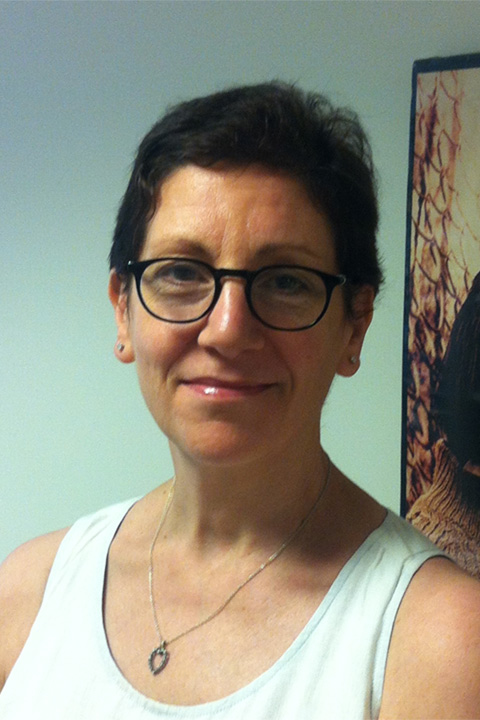Art and Art History
Avery Architectural & Fine Arts Library is named for Henry Ogden Avery, one of late-19th-century New York's promising young architects and a friend of William Robert Ware, who founded the Department of Architecture at Columbia in 1881. A few weeks after Avery's premature death in 1890, his parents, Samuel Putnam Avery and Mary Ogden Avery, established the library as a memorial to their son. They offered 200 of his books, mostly in architecture, archaeology, and the decorative arts, many of his original drawings, funds to round out the book collection, and an endowment to assure the continuous growth of the library.
For 125 years, Avery Architectural & Fine Arts Library has served a worldwide community of scholars by documenting the built environment and the world’s cultural heritage. From its founding in 1890 to today, Avery Library has been committed to acquiring, documenting, preserving, and making accessible the most important works and research literature of architecture and archaeology. It has historically been considered a “library of record” for architecture.
Incorporated into the Avery Architectural & Fine Arts Library in 1977, but with a different classification scheme and location, the fine arts collection contains material in the fields of fine arts (drawing, sculpture, painting, prints, and photography); art theory; and museum and curatorial studies. Beginning January 31, 2011, all newly cataloged books for Avery Library are classed in the Library of Congress classification scheme.
Materials in art and art history are primarily collected in Avery Library. Material from all geographic regions and in all languages is collected. Collection suggestions from students and faculty are welcome.
a. Undergraduate
The Libraries collects materials in support of undergraduate students majoring in art history and archaeology, or any undergraduate students or faculty members whose research overlaps with art or art history.
b. Graduate and Professional Schools
The Libraries acquires materials primarily in support of the following degree-granting programs of the Department of Art History and Archaeology: MA in Art History, MA in Modern Art: Critical & Curatorial Studies (MODA), and PhD in Art History. It also supports the work of graduate students or faculty members whose research overlaps with art or art history.
c. Institutes and Interdisciplinary Programs
Along with other libraries within Columbia University Libraries, Avery Library acquires materials to support programs in classical studies, medieval and Renaissance studies, history, and the Graduate School of Architecture, Planning and Preservation (GSAPP), as well as any students pursuing research in art or art history. Additionally, Avery Library provides research support for faculty members, visiting scholars, post-doctoral scholars, and alumni.
d. Course Reserves
Selection for course reserves is initiated by individual faculty members. Every effort is made to acquire such materials lacking in the collection.
a. Print
Avery Library acquires print material on all aspects of the visual arts and art history. Western European and North American monographs, exhibition catalogs, and periodicals are acquired for the collection by Avery librarians. Those published in the rest of the world are acquired by the following Global Studies librarians: African Studies Librarian, Latin American & Iberian Studies Librarian, Middle East & Islamic Studies Librarian, Russian, Eurasian & East European Studies Librarian, and South & Southeast Asian Studies Librarian. The C.V. Starr East Asian Library acquires materials published in vernacular Eastern languages. Avery Library does not collect auction house catalogs, “how-to” guides to producing art, books on typography, advertising, non-Asian calligraphy, slides, and other audio visual materials. However, the Rare Book & Manuscript Library (RBML) collects books on typography and calligraphy in their graphic arts and book arts collections (see below).
Areas of long-established specialization in the Department of Art History and Archaeology that Avery Library supports, resulting in historic strengths, are: European Byzantine, medieval, Baroque, and Renaissance art; ancient Near Eastern, Greek, and Roman art and archaeology; nineteenth- and twentieth-century European and American art; African art and archaeology; South Asian art and archaeology; and East Asian art and archaeology. (Collecting in the latter two specializations is shared with the East Asian Library as explained above). In the past quarter century, there has been an increased emphasis on Latin American art and archaeology, modern and contemporary art in all geographic regions, photography, art criticism and theory, and museum and curatorial studies.
Some subject areas that are shared between Avery Library and other Columbia University Libraries collections include:
Archaeology: Site-specific excavation reports and materials dealing with artifacts and the built environment, i.e. the creative remains of humanity, are acquired by Avery Library. Works on cultural and other historical elements of archaeology are acquired by Butler Library.
Photography: Avery Library acquires books about photography as an artistic medium, including the history of photography, monographs on photographers, catalogs of exhibitions, etc. Modern imprints on photographic technique are not typically collected. The Rare Book & Manuscript Library (RBML) houses and adds to the Epstean Collection on the history and science of photography, including materials on photographic processes. Many other collections of photographs as artifacts are held by distinctive collections throughout the Libraries. See “Distinctive Collections” below.
Graphic Arts: The graphic arts collection within Avery Library focuses on individual artists, artistic movements, and schools, prints and drawings collection catalogs, and exhibition catalogs. RBML contains a historically-deep and growing graphic arts collection on the history of books and printing and the allied arts, including calligraphy, typograph, binding, and book illustration and the book arts collection with examples of fine printing, book illustration, and artists' books.
East Asian: Titles published in vernacular East Asian languages are acquired by and for the C.V. Starr East Asian Library. Titles on East Asian subjects in Roman, Cyrillic, or other scripts are acquired for Avery Library, although some Roman script titles are acquired for the East Asian Library by their own staff.
b. Digital Collections
Columbia University Libraries offers a robust variety of electronic resources. In the field of art, we strive to offer a full array of available relevant databases, electronic books, and periodicals. Notable collections include Artifex Press, A&AePortal, Art Sales Catalogues Online, Library Stack.
c. Media
The Butler Media Collection acquires videos, primarily documentaries, about all aspects of the visual arts. The Librarian for Butler Media, Film Studies & Performing Arts is primarily responsible for collecting media.
The Libraries has a significant array of photography collections held in multiple distinctive locations. See “Distinctive Collections” below.
d. Languages Collected
All languages are collected, except for texts in Chinese, Japanese, Korean, and Tibetan, which are collected in the C.V. Starr East Asian Library.
e. Chronological Focus
All chronological periods are collected.
f. Geographic Focus
All geographic areas are collected. Materials published in North America and Western Europe covering all geographic regions are selected by the Fine Arts Librarian. Materials published in Africa, Latin America, the Middle East, Russia, Eurasia, and Eastern Europe, and South and Southeast Asia are selected by subject specialists in those areas and are housed in Avery Library or the Libraries’ shared off-site storage facility (ReCAP). East Asian material in Chinese, Japanese, Korean, and Tibetan are collected and housed in the C.V. Starr East Asian Library or ReCAP.
g. Imprint Dates Collected
The main focus of current collecting is recent (+/- three years) imprints, with older imprints as needed. When antiquarian acquisitions are offered via gift or purchase, no specific chronological ranges are established in advance: rare or unique materials from any period may be considered.
The Avery Classics Collection is the rare book collection of Avery Library and is one of the largest architectural rare book collections in the world. Its strengths reflect the library's original subject scope of architecture, archaeology, urbanism, and the decorative arts. Avery Classics also contains Byzantine, medieval and Renaissance, and some ancient Latin American fine press facsimile editions, reprinted editions of major works such as Éditions "Cahiers d'art" Pablo Picasso by Christian Zervos, rare periodical runs such as Voilà: l'hebdomadaire du reportage, and many other titles determined to be of significant value and/or rarity. Avery Classics also has important holdings of graphic suites, manuscripts, broadsides, photographs, and printed ephemera.
Art Properties, based in Avery Library, oversees the Columbia University art collection. This collection is available for research and study and curricular integration. There is no acquisitions budget for the University art collection. All new proposed gifts of art must be vetted and approved by the Provost-appointed Committee on Art Properties and stewarded and organized by Art Properties. Strengths of the collection include art of the United States, sculpture and decorative arts (e.g. ritual bronzes, ceramics), Buddhist art from South and Southeast Asia, archaeological artifacts from the Roman/Etruscan, Aegean, and Near Eastern worlds, and public outdoor sculpture. Art Properties also holds the world’s largest collections of art by Julian Clarence Levi (1874--1971), Florine Stettheimer (1871--1944), and Ary Stillman (1891--1967).
The Rare Book & Manuscript Library (RBML) holds renowned and growing collections of materials on graphic arts and book arts which includes the history of books, printing and the allied arts, including calligraphy and book illustration, as well as examples of fine printing, book illustration, and artists' books. Many of the archives of artists held by RBML are related to their work as book illustrators and designers. These include a major collection of drawings and sketchbooks by Arthur Rackham (1867--1939), the papers of artist Rockwell Kent (1882--1971) and graphic designer Ernst Reichl (1900--1980), and the printed work of Edward Gorey (1925--2000). In addition, RBML holds the papers of Columbia art historians such as Meyer Schapiro (1904--1996) and Paul S. Wingert (1900--1974) as well as the papers of artist Florine Stettheimer (1871--1944) and those of art organizations like the Kulchur Foundation records and BOMB Magazine. RBML houses and adds to the Epstean Collection on the history and science of photography, including materials on photographic processes.
Photographs as artifacts: The Libraries owns a number of collections of photography. To see some examples of these collections, please visit: Photography: Guide to Research: CUL Photo Collections.
a. Consortia and Collaborative Collecting with Other Institutions
The Latin American Contemporary Art Cooperative Collection Development Agreement started in 2013 as a joint initiative by five members of the Ivy Plus Library Confederation. Each institution has agreed to acquire books on contemporary artists from select countries in Latin America. Avery Library is responsible for material published in the Caribbean and Venezuela.
In 2018, the Latin American and Caribbean Contemporary Art Web Archive became an extension of the project above. This archive aims to preserve for researchers the personal and official websites belonging to select notable contemporary Latin American artists in order to assure the continuing availability of the important content they contain for researchers and scholars.
b. Location Decisions and Selection for ReCAP
Due to space constraints, approximately sixty percent of Avery Library’s collection is in Libraries’ shared off-site storage facility (ReCAP). These titles are individually selected by Avery librarians.
Newly-received titles: Determination whether to keep on site or send directly to ReCAP is made based on the quality of the images, the publisher, the author, and anticipated amount of use.
Titles currently in Avery Library: Librarians review reports title by title to consider moving to ReCAP. Reports are generated from imprints from a specified date or older that have been “circulated” (i.e. put on reserve or signed out to a shelf, carrel, or faculty office) fewer than two times if the text is in English and fewer than four times if in another language in the past five years. The goal is to send lower-use titles off site and keep works of a reference nature on site.
Intentional duplication of titles does not take place.
Deduplication only takes place if a title has been identified for relocation to ReCAP and a copy already exists on shelf at that facility. Even in this instance, the Librarian would inspect the copy that would potentially be withdrawn for any unique features or unusual provenance before assenting to deduplication.
c. Deaccessioning
Titles are generally deaccessioned only in cases where the physical copy is disintegrating and no longer serviceable in print/physical format. In these instances, the Librarian will evaluate whether to replace the physical copy with another. Resources on obsolete formats are reviewed by librarians on a case-by-case basis; in instances where the original format has artifactual value, it will be retained even after it has been digitized or otherwise reformatted. Materials located in the Avery Classics Collection are never deaccessioned.
d. Digitization and Preservation
Digitized texts are made available through cooperative repository and access sites, including the Hathi Trust and Internet Archive, as well as through specialized discovery environments.

Christine M. Sala
Architecture & Fine Arts Librarian
- Avery Library

Roberto C. Ferrari
Curator of Art Properties; Lecturer in Art History & Archaeology
- Art Properties

Nancy Friedland
Librarian for Butler Media, Film Studies, & Performing Arts
- Humanities & History

Jane Siegel
Rare Book Librarian
- Rare Book & Manuscript Library
Last updated: April 2019